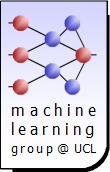NEWS: |
Check out articles already published in the SWSC Topical Issue on Statistical Challenges in Solar Information Processing. |
Important dates
15 May 2014: Request for financial support (with abstract)
15 June 2014: Early registration (fee: 300 euros)
After 15 June: Late registration (fee: 350 euros)
15 25 June 2014: Abstract submission
11 July: Deadline hotel booking at preferential rate
8 August: Closing of online payment
After 8 August: Payment of registration fees in cash at the meeting
17 August: Shuttles from Marloie Railway Station to Conference Venue and Welcome reception
18-21 August: Workshop
22 August: Shuttles from Conference Venue to Marloie Railway Station
Workshop Program
The SIP workshop series tackles the challenges of optimizing the science return of solar and heliospheric missions by bringing together different communities (solar and space scientists, statisticians, and data processing experts) to address the data analysis issues of these missions. To promote the communication between communities, two experts - one from the solar physics and one from the data processing community - will address jointly mutual topics of interest.
SIPWork's main goal is to encourage the discussion among the participants. Plenary talks are given in the morning while afternoons are devoted to splinter and poster sessions, where researchers are given the opportunity to describe in details their efforts and gather feedback.
We encourage people to submit abstracts related to the topics listed below.
Session 1: Power laws in solar physics: observations and proper estimation.
Power laws are ubiquitous in solar physics. The value of a power law index can yield important information on the absence or presence of a given theoretically proposed physical mechanisms. However, the precise estimation of a power law model is a delicate and subtle problem.In this session we will discuss:
- Choice of model
- Determination of error bars and confidence interval
- How to deal with truncated data, instrumental or selection effect
- Bayesian paradigm for power law estimation
- Clare Parnell: Power laws in solar physics
- David Van Dyk: Bayesian paradigm for statistical inference of power laws
Session 2: Optimal combination of in-situ and imaging data.
Understanding the complete physical system from the Sun to Earth requires us to jointly analyze heterogeneous data sets, such as the ones provided by Solar Orbiter. How do we combine the information in these data sets to optimize the scientific return?In this session we will discuss:
- Combination in-situ and imaging data
- Origin, evolution, and propagation of Coronal Mass Ejections (CMEs) through the heliosphere
- Link between CME and ICME
- 3D reconstruction of CMEs
- Common data analysis tool environment to help analyzing heterogeneous data sets
- Christian Möstl: Combining HI and in situ observations to constrain CME evolution
- Tim Howard: Tracking of CME and ICME through the heliosphere
Session 3: How well can we predict solar eruptions and disturbances?
The physics behind many geoeffective solar phenomena such as solar flares, eruptions and solar energetic particle events is not well understood, yet these phenomena are the ones we wish to to predict. What can we do to improve our predictive abilities?In this session we will discuss:
- Forecasting of solar flares
- Forecasting of CME arrival and geo-effectiveness
- Forecasting of arrival of solar energetic particles
- Feature extraction (from magnetogram, EUV, coronagraph, H-alpha images, etc.)
- Tracking of large scale features (active regions, coronal holes, filaments, etc.)
- Machine learning techniques to discriminate "quiet" from "prone-to-flare situation": supervised classification, discriminant analysis, ...
- Graham Barnes: Physics behind flare prediction and current methods for flare forecasting
- Roberto D'Ambrosio, Pierre Dupont: Machine learning in flare forecasting
Session 4: Tracking of small scale magnetic features and its applications.
What is the "best" way to track small scale features on the Sun, and how can we use this information to distinguish between different solar dynamo models?In this session we will discuss:
- Estimation of surface field motion
- Computer vision measurements of feature creation, motion and interaction
- Correlations in pattern of flux emergence
- Manfred Schuessler: The solar dynamo
- Thomas Corpetti: Recent methods in tracking of small scale features
Session 5: Origin of variability and prediction of solar wind.
We live in the extended upper atmosphere of the Sun, known as the solar wind. How can we predict solar wind conditions at Earth? What other data and analysis techniques do we need to better understand the solar wind?- What are the sources and accelerating mechanisms of fast and slow solar wind?
- What is the origin of variability of the solar wind?
- What are the properties of the solar wind turbulence?
- Analyzing techniques for solar wind turbulence
- How will Solar Orbiter and Solar Probe plus help us understand the solar wind?
- William Matthaeus: Solar wind turbulence and the future missions Solar Orbiter and Solar Probe Plus.
- Khurom Kiyani: Analysing techniques in solar wind turbulence: high order statistics, multi resolution analysis, ...






